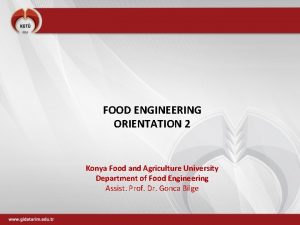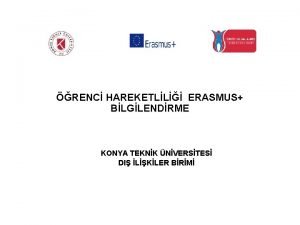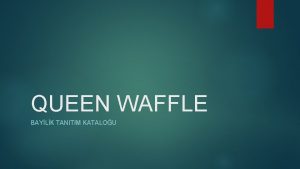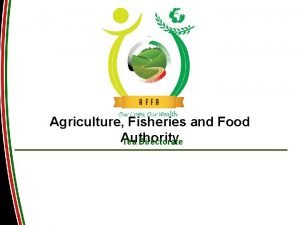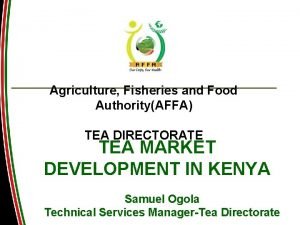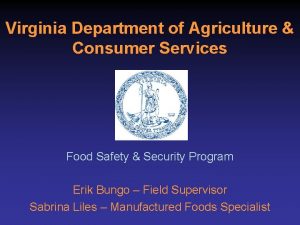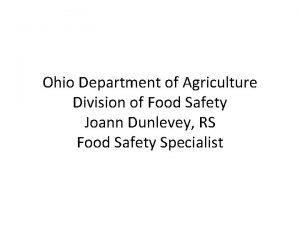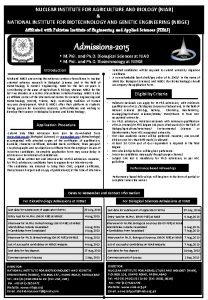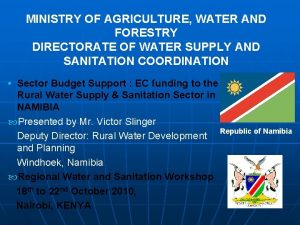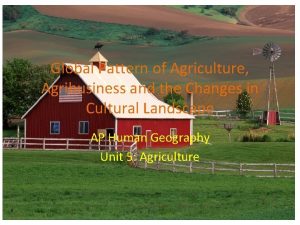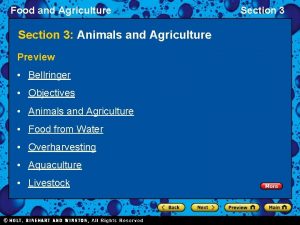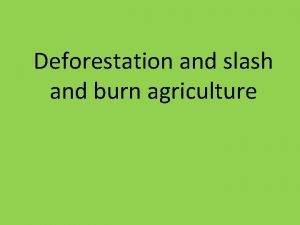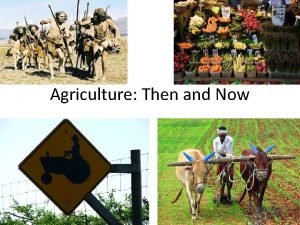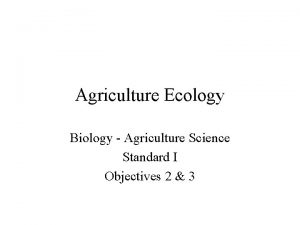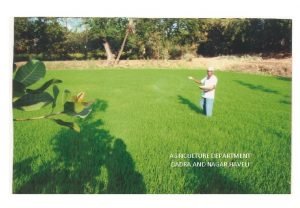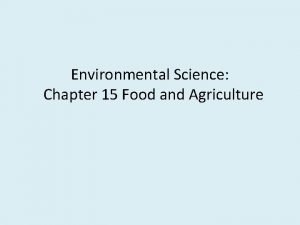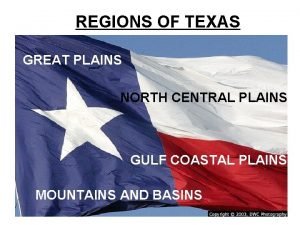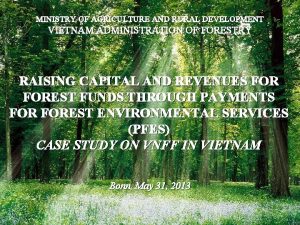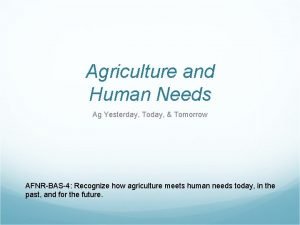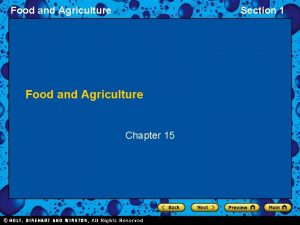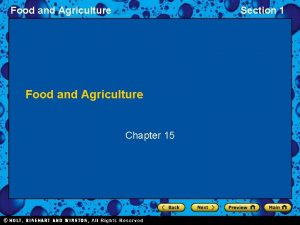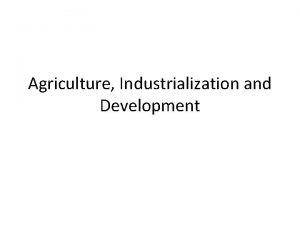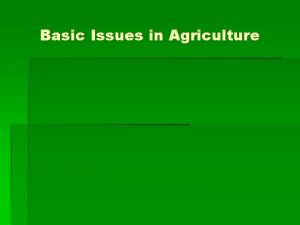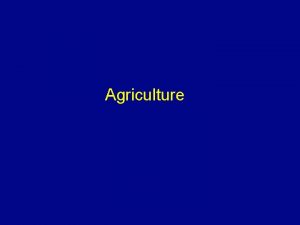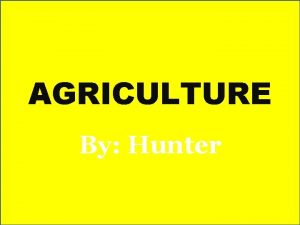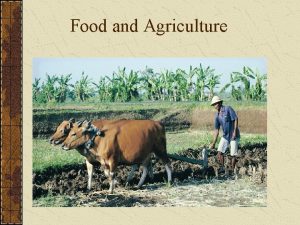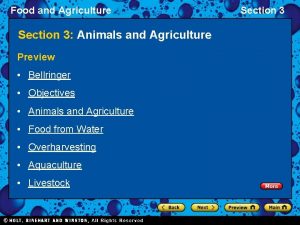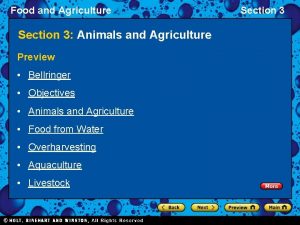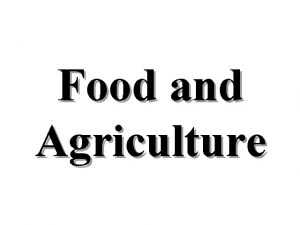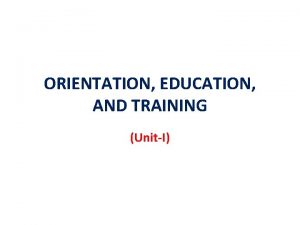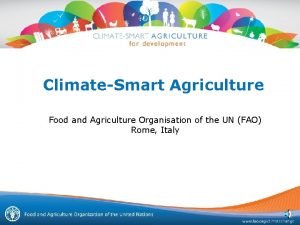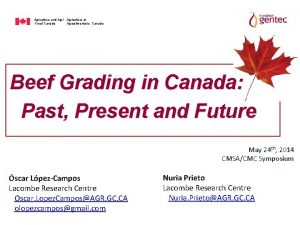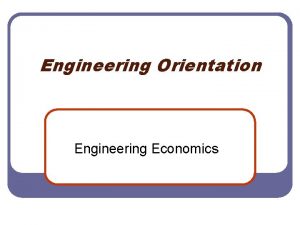FOOD ENGINEERING ORIENTATION 2 Konya Food and Agriculture












































- Slides: 44

FOOD ENGINEERING ORIENTATION 2 Konya Food and Agriculture University Department of Food Engineering Assist. Prof. Dr. Gonca Bilge

FOOD 2

Fire-kissed food is easier to digest and more nutritious than raw food is. Some anthropologists argue that cooking was the essential step that allowed early humans to develop the big brains characteristic of Homo sapiens 3

FOOD EVALUTION 4

Everyone applies food processes even in the kitchen Everyone wonders interesting food facts! 5

• Ice cream contains naturally-occurring, non-digestible carbohydrate ingredients (guar, carrageenan, carob bean, xanthan, cellulose, tara gums, etc. ). These ingredients bind up and distribute water during freezing, so that the frozen ice cream maintains a smooth (rather than a grainy or icy) texture. • These noted ingredients all have varied plant and microbial origins, but carrageenan gum itself is truly isolated from red seaweed! 6

• This browning effect is caused by an enzyme—Polyphenol oxidase or PPO— that is naturally present in the apple itself. • When an apple is sliced, tissue cells located along the cut surface become ruptured or broken. This cell rupture allows PPO enzymes and other cell constituents to combine and react to create the brown discoloration. Though the apple becomes less appetizing—it is still safe to eat. 7

• Corn starch in “instant” pudding has been physically changed so that heating is no longer required for thickening. • When milk is added, corn starch granules rapidly absorb liquid and swell to many times their original size (see diagram). Imagine a room packed full of inflated balloons—think about how much friction you would encounter if you tried to walk through it! Corn starch thickens pudding in this way. 8

9

• Rice Krispies® consist of puffed, highly porous, dried pieces of rice. Each piece possesses many internal tunnels and connected air spaces. • As milk is added, it enters the many pores and tunnels within a puffed rice piece, concentrating and pressuring the air within these internal spaces to the point that the walls of these structures shatter— creating the “snap, crackle, pop” sounds. 10

• The chocolate center within the candies is coated with multiple layers of a corn syrup/sugar solution, with each individual layer allowed to dry or harden before a successive coat is applied. • This multi-layer, confectionary coating does not melt in the hand— but does dissolve in the mouth with the aid of moisture present in the saliva. 11

• The sparking is an effect of triboluminescence, which occurs as sugar crystals within the candy are fractured by mechanical force (in this case chewing). • The structural change to sugar crystals results in the release of energy that is absorbed by nitrogen in the air and a flavor compound (methyl salicylate) in the mints, both of which emit visible light as they return to ground state 12

FOOD SCIENCE IS RELATED WITH DAILY LIFE TO PROVIDE HEALTHIER, RELIABLE AND PRACTICAL SOLUTIONS TO MILLIONS OF PEOPLE 13

BIGGEST COMPANIES ARE FROM FOOD INDUSTRY 14

15

BIGGEST PROBLEM FOOD SCANDALS 16

Factors which contribute to potential hazards in foods include improper agricultural practices; • • • Poor hygiene at all stages of the food chain; Lack of preventive controls in food processing and preparation operations; Misuse of chemicals; Contaminated raw materials, ingredients and water; Inadequate or improper storage, etc. • Microbiological hazards; • Pesticide residues; • Food additives; • Chemical contaminants, biological toxins; including • Adulteration. . 17

ndal ilk sca m e s e in h C 8 200 18

1981 “ Toxic oil syndrome ” : Consumption of rapeseed oil denatured with aniline caused the death of hundreds of people 1985: Ethylene glycol, a frost protection agent was added to wine to upgrade it to table-wine quality 1985: Usage of spoilt eggs in pasta products Since 1980 s: Mad cow disease 1994: Lead tetroxide in chilli powder 1996 : Synthetic “ apple juice ” concentrate 1999 : Dioxins in feed 2001: Hormones, vaccines and antibiotics in pork 2002 : Antibiotics in honey from China 2003 : Adulterated wine (extended with water; added alcohol, coloring, and sugar) from Eastern Europe 2004: Banned dyes used in spices 2013: Meat adulteration scandal in Europe; foods advertised as containing beef were found to contain undeclared horse meat, as much as 100% of the meat content in some cases 19

• Poland: milk powder contaminated with rodent poison, chicken meat infected with Salmonella, road salt in food, antibiotics in honey. . • Czech Republic: methanol scandal in alcoholic beverages (more than 30 deaths) • Hungary: colored pork and sold as beef • Slovakia: yoghurt with glass. . . 20

Meat Food origin ? ? Eggs • Animals born in • Eggs from foreign illegal Holland breed with Salmonella • The same animals fed • Repackaged and in Slovakia marketed in Slovakia • Slaughtered in • Labelled with the Hungary Slovak identification • Meat sold in Slovakia and labelled as „made in EU“ 21

22

23

DIRECT RELATION BETWEEN FOOD AND HEALTH!!! 24

25

Food Engineer’s Responsibilities *Providing Sustainable food *Providing of Food quality *Providing of Food safety *Evaluation of food wastes *Developing new food technologies 26

FOOD ENGINEERING Research and development Production steps Quality and control Packaging 27

You can not manage without measuring!!!

Different food matrixes 29

30

31

Basic food groups *Milk and milk products *Meat and meat products *Cereals *Sugars *Oils and fats *Gums *Vegetables *Spices, flavors *Beverages Fundamental food ingredients *Carbonhydrates *Fats *Proteins *Vitamins *Minerals 32

Physical-chemical analysis Refractometry Colorimetry Spectrometry Polarimetry Chromatography Ion Exchange Rheology Viscosity Surface tension apparatus Polarography Freezing point Other food ingredients Coloring matters Chemical preservatives Metals Toxins … 33

product adulteration method Fruit juice Dilution with water Brix, Fruit juice Sugar addition GC, SNIF/NMR Meat Cheaper meat addition Methods of molecular biology Natural vanilla extract Synthetic vanillin SNIF-NMR addition Soya Genetic modification DNA methods Plant oil Cheaper oil addition Chromatography, MS Wine Water dilution O IRMS Alcohol Wrong origin IRMS, SNIF/NMR Honey Cane and corn syrup C IRMS addition 34

Prove of honey adulteration Proof of syrup, sugar or malt extracts adding, 1. Pollen analysis, 2. Sugar determination, 3. Enzyme determination, 4. Proof of additives- food colorants, etc. . . 35

36

37

38

39

JOB OPPORTUNITIES 40

Prof. Dr. Zumrut Begum Ogel Prof. Dr. Sencer Buzrul Assist. Prof. Dr. Ayca Gedikoglu Assist. Prof. Dr. Kubra Sultan Ozdemir Assist. Prof. Dr. Gonca Bilge 41

Assit. Cansu Leylak Assit. Hale Inci Ozturt Negis 42

NOTE! KGTU provides 30% more scholarship for students in Food Engineering 43

THANKS FOR YOUR ATTENTION 44
 Konya food and agriculture university
Konya food and agriculture university Konya halk oyunları
Konya halk oyunları Umaihl
Umaihl Konya odg
Konya odg Matrah artırımı
Matrah artırımı Ktün erasmus
Ktün erasmus Queen waffle konya
Queen waffle konya Ems konya
Ems konya E-arşiv faturaları aylik indirme konya smmmo
E-arşiv faturaları aylik indirme konya smmmo Ethnocentrism and polycentrism
Ethnocentrism and polycentrism Tea directorate
Tea directorate Ministry of food agriculture and fisheries denmark
Ministry of food agriculture and fisheries denmark Agriculture fisheries and food authority
Agriculture fisheries and food authority Mun engineering complementary studies
Mun engineering complementary studies Virginia department of agriculture and consumer services
Virginia department of agriculture and consumer services Ohio department of agriculture food safety
Ohio department of agriculture food safety Forward engineering in software engineering
Forward engineering in software engineering Unit 2 food food food
Unit 2 food food food Eltonian pyramid
Eltonian pyramid What is system in software engineering
What is system in software engineering Dicapine
Dicapine Elegant systems
Elegant systems Forward and reverse engineering
Forward and reverse engineering Vital villages thriving towns introduction
Vital villages thriving towns introduction Demography antonym
Demography antonym Incomplete flower
Incomplete flower Nuclear institute for agriculture and biology
Nuclear institute for agriculture and biology Ministry of agriculture, water and forestry directorates
Ministry of agriculture, water and forestry directorates What is the global pattern of agriculture and agribusiness
What is the global pattern of agriculture and agribusiness Section 3 animals and agriculture
Section 3 animals and agriculture Define slash and burn agriculture
Define slash and burn agriculture Agriculture now and then
Agriculture now and then Biology and agriculture
Biology and agriculture Agriculture of dadra and nagar haveli
Agriculture of dadra and nagar haveli Ministry of agriculture and rural development cameroon
Ministry of agriculture and rural development cameroon Florida dept of agriculture and consumer services
Florida dept of agriculture and consumer services Active reading section 3 animals and agriculture
Active reading section 3 animals and agriculture Coastal plains texas major cities
Coastal plains texas major cities Where is america
Where is america Ministry of agriculture and rural development vietnam
Ministry of agriculture and rural development vietnam Mendel university fees
Mendel university fees Agriculture cooperation and farmers welfare
Agriculture cooperation and farmers welfare Florida dept of agriculture and consumer services
Florida dept of agriculture and consumer services Florida dept of agriculture and consumer services
Florida dept of agriculture and consumer services Agriculture- yesterday today and tomorrow
Agriculture- yesterday today and tomorrow
